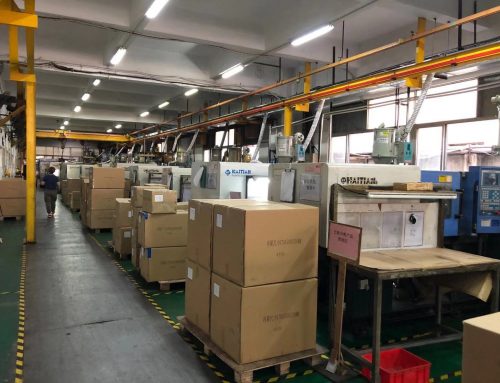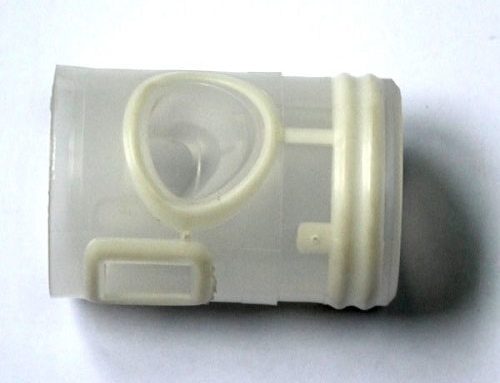Bumper of a car is a safety device that absorbs and mitigates external impact forces to protect front and rear of car. In the 1980s and 1990s, automobile bumpers basically used metal materials as raw materials. After more than 20 years of development, front and rear bumpers use plastic as raw materials in modern cars, which not only maintains protection function, but also has the harmony with car body shape. It is characterized by uniformity, light weight, and reduced fuel consumption. Plastic bumpers not only have good strength and rigidity, but also have decorative features. From a safety point of view, plastic bumper can act as a buffer to protect front and rear bodies in the event of a car collision; From the perspective of appearance, it is beautiful that a carefully sprayed bumper can naturally combined with a car. So it has become an important part for exterior decoration of car, design of automotive bumper molding become crucial in car parts mold. Because of important role played by plastic bumpers, major automotive companies all around the world are working on automotive plastic moulding specially car bumper molding systems.
Bumper structure
The plastic front bumper consists of three parts, namely outer plate, cushioning material and beam. The specific structure and parts are shown in Figure 1. Raw materials of outer plate and cushioning material are all plastic, and beam is a U-shaped groove punched from a cold-rolled sheet, and thickness of cold-rolled sheet is about 1.5 mm. There are two main types of materials used in plastic bumpers: polyester and polypropylene, and molding process is generally injection molding in automotive mold technology.
Automotive Bumper Molding design
Design Principles
When designing automotive bumper molding, designer should clearly understand principles of active safety, passive safety, harmony and ease of installation and maintenance during design and development of bumper.
(1) Active safety – On the basis of maximally satisfying function of use, design of bumper should comply with regulations such as protrusions of automobile, and design should implement concept of safety, reliability and reasonable design.
(2) Passive safety – When car collides with outside world, bumper acts as a safety device to protect front and rear car bodies and has excellent energy absorption characteristics.
(3) Harmony and consistency – no matter in external modeling, color, or quality perception, we can not only pursue characteristics of individual bumper, but also keep in harmony with the overall shape of vehicle, and integrate with the whole vehicle.
(4) Easy to install and maintain – the bumper and its adjacent parts can not interfere, gap should be reasonable, installation point should be set in accordance with ergonomics.
Bumper Selection Principle
In general, plastic materials must meet following requirements: good performance requirements, process performance requirements, and reasonable cost requirements. Although raw materials of plastic bumpers are generally polyester and polypropylene, there are still some differences in molecular structure of these raw materials. These differences will lead to different plastic properties, so designers must master the selection principle.
Material Selection Method
First of all, to have a comprehensive and in-depth understanding of use of plastic bumpers in Automotive mold technology, understanding should include: what performance (and performance indicators) should be provided when the bumper is working normally; working environment of bumper, environmental indicators include temperature, humidity, medium, etc.
Second, master performance characteristics of plastic raw materials. Based on a general understanding of the material properties, classification lists outstanding performance of various materials and facilitates selection of materials. In general, modified polypropylene is usually chosen as material of plastic bumpers. Modified polypropylene is a thermoplastic for injection molding, and its properties must be well known. When using modified polypropylene material, the following four basic characteristics should be satisfied: first, good heat resistance, in the range of 80-100 degree; second, impact strength should be controlled in the range of 0.3-4 J·cm2; third, tensile strength ranges from 29 MPa to 39 MPa; and fourth, good moldability and weather resistance.
Structural design of Automotive Bumper Molding
After design principle is followed, vehicle shape and overall layout are determined, system layout and scheme design, structural design of plastic bumper is carried out. The first step in design is design of install and match adjacent components.
Automobile plastic bumper is both a safety piece and a decorative piece. Its structural design is not only closely related to safety of the whole vehicle, but also affects quality perception. With development of society, cars play an increasingly intimate role in modern people’s lives, and car bumper molding will also be on the road of innovation, which will be integrated into beauty, energy absorption, light weight, low cost, high performance, and fuel consumption in automotive plastic moulding.





